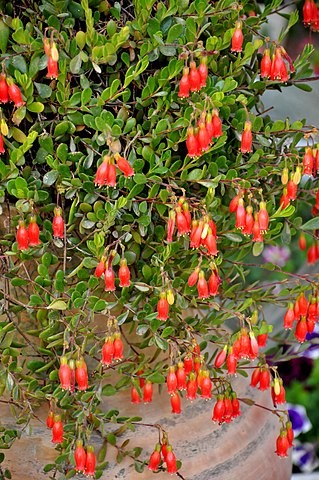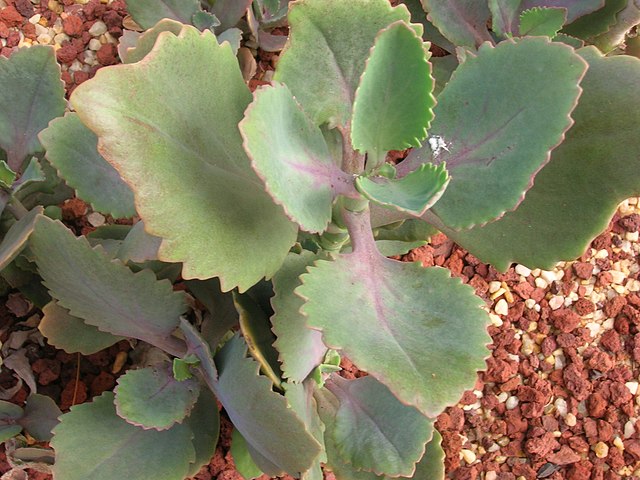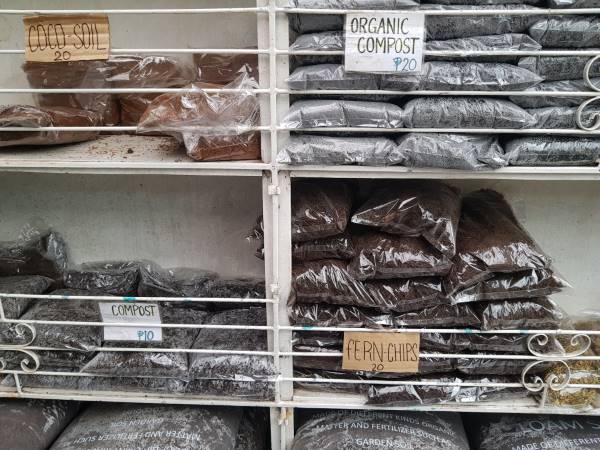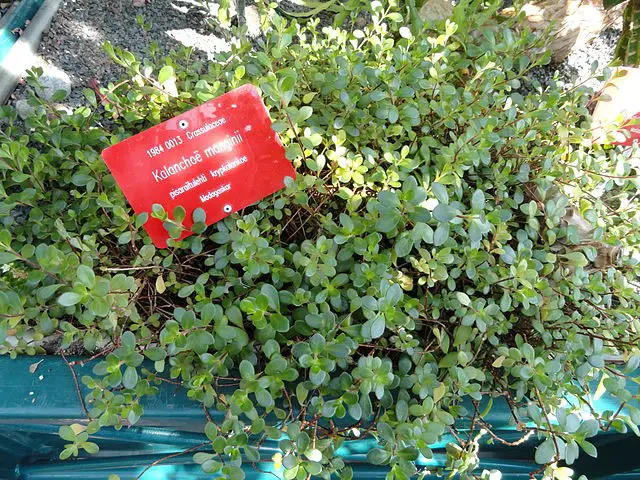Origin and Distribution
Kalanchoe Tessa, also known as Kalanchoe Blossfeldiana Tessa, is a succulent plant that belongs to the family Crassulaceae. It is a hybrid variety that was created by crossing two different Kalanchoe species, Kalanchoe blossfeldiana and Kalanchoe daigremontiana.
The exact origin of Kalanchoe Tessa is not known, but it is believed to have been developed in the Netherlands, which is known for its extensive plant breeding industry. From there, the plant has been distributed around the world and is now commonly found in gardens and homes throughout Europe, North America, and other parts of the world.
Temperature and Humidity Requirements
Kalanchoe Tessa prefers warm temperatures between 60-85°F (16-29°C) and moderate humidity levels.
Kalanchoe Tessa Watering
Water Kalanchoe Tessa deeply but infrequently, allowing the soil to dry out between watering. Overwatering can lead to root rot and other problems.
Here are some key things to keep in mind when watering your Kalanchoe Tessa plant:
- Frequency: Kalanchoe Tessa is a drought-tolerant plant, which means it can survive for long periods without water. Overwatering is one of the most common causes of plant death, so it’s essential to avoid watering too frequently. A good rule of thumb is to wait until the soil has completely dried out before watering again. Depending on your climate and the size of your plant, this may be anywhere from a few days to a couple of weeks.
- Amount: When you do water your Kalanchoe Tessa, it’s important to give it enough water to thoroughly saturate the soil. You should water until the excess water drains out of the bottom of the pot. Be sure to discard any water that collects in the saucer, as this can lead to root rot.
- Soil type: Kalanchoe Tessa prefers well-draining soil that allows excess water to flow through easily. Using a soil mix that is specifically designed for succulents is a good option. If you’re using regular potting soil, you can add perlite or sand to improve drainage.
- Temperature and humidity: Kalanchoe Tessa prefers warm, dry conditions and can be sensitive to high humidity. Avoid misting the plant, as this can cause fungal growth and other issues. If you live in a particularly humid climate, you may want to consider using a dehumidifier or placing the plant near a fan to improve air circulation.
- Seasonal variations: The watering needs of your Kalanchoe Tessa may vary depending on the season. During the summer months, when temperatures are higher and the sun is more intense, the plant may require more frequent watering. In the winter, when temperatures are cooler and the sun is weaker, you may need to water less frequently.
In summary, watering Kalanchoe Tessa requires a balance between not overwatering and not underwatering. To achieve this balance, wait until the soil has dried out completely before watering thoroughly, use well-draining soil, avoid misting, and adjust watering frequency depending on seasonal variations. With proper watering, your Kalanchoe Tessa should thrive and provide beautiful blooms year-round.
How Do I Know if My Succulent is Getting Too Much or Too Little Water?
If the leaves of Kalanchoe Tessa are turning yellow or mushy, it may be a sign of overwatering. If the leaves are shriveled or wrinkled, the plant may need more water.
How Often Should I Water It?
Water Kalanchoe Tessa once every 1-2 weeks, depending on the environmental conditions and the moisture level of the soil.
Repoting Kalanchoe Tessa
Kalanchoe Tessa prefers well-draining soil or potting mix that is rich in nutrients. Repot Kalanchoe Tessa every 2-3 years or when it outgrows its container.
How Do I Know if My Succulent Needs to be Repotted, and What Signs Should I Look For?
If the roots of Kalanchoe Tessa are growing out of the bottom of the pot or if the plant is becoming top-heavy, it may be time to repot.
Water Kalanchoe Tessa lightly after repotting and wait at least a week before watering again to avoid overwatering.
Fertilize Kalanchoe Tessa once a month during the growing season with a balanced fertilizer.
How to Propagate Kalanchoe Tessa?
Propagating Kalanchoe Tessa is relatively easy and can be done by stem cuttings or leaf cuttings. In this article, we will discuss both methods in detail.
Propagation by Stem Cuttings
Propagation of Kalanchoe Tessa by stem cuttings is a straightforward method that involves taking a section of the stem and planting it in a suitable growing medium. Here are the steps involved:
Materials Needed
- A healthy Kalanchoe Tessa plant
- A sharp, sterile knife or scissors
- A suitable potting mix (such as a mix of sand and perlite)
- A small pot or container
- Rooting hormone (optional)
Steps
- Choose a healthy stem from your Kalanchoe Tessa plant. The stem should be at least 3-4 inches long and have a few leaves attached to it.
- Using a sharp, sterile knife or scissors, cut the stem at a 45-degree angle just below a node (where the leaves attach to the stem).
- If desired, dip the cut end of the stem into rooting hormone powder to encourage root growth.
- Fill a small pot or container with a suitable potting mix. Make a hole in the potting mix with your finger or a pencil.
- Place the cut end of the stem into the hole and gently press the potting mix around it to secure it in place.
- Water the cutting lightly, being careful not to dislodge it from the potting mix.
- Place the pot in a warm, bright location, but out of direct sunlight.
- Keep the potting mix moist but not waterlogged. You may want to cover the pot with a plastic bag or container to create a humid environment for the cutting.
- After a few weeks, the cutting should start to grow roots. You can gently tug on the stem to check if it has rooted.
- Once the cutting has rooted, you can transplant it into a larger pot or directly into the garden.
Propagation by Leaf Cuttings
Propagation of Kalanchoe Tessa by leaf cuttings is another simple method that involves taking a leaf from the parent plant and allowing it to root and grow a new plant. Here are the steps involved:
Materials Needed
- A healthy Kalanchoe Tessa plant
- A sharp, sterile knife or scissors
- A suitable potting mix (such as a mix of sand and perlite)
- A small pot or container
- Rooting hormone (optional)
Steps
- Choose a healthy leaf from your Kalanchoe Tessa plant. The leaf should be mature, but not old or damaged.
- Using a sharp, sterile knife or scissors, cut the leaf from the plant. Make sure to include a small section of the stem with the leaf.
- If desired, dip the cut end of the stem into rooting hormone powder to encourage root growth.
- Fill a small pot or container with a suitable potting mix. Make a hole in the potting mix with your finger or a pencil.
- Place the leaf into the hole, cut end down, and gently press the potting mix around it to secure it in place. Make sure that the leaf is in contact with the potting mix.
- Water the cutting lightly, being careful not to dislodge it from the potting mix.
- Place the pot in a warm, bright location, but out of direct sunlight.
- Keep the potting mix moist but not waterlogged. You may want to cover the pot with a plastic bag or container to create a humid environment for the cutting.
- After a few weeks, small plantlets should start to grow from the base of the leaf. These plantlets are called “pups” and will eventually form a new plant.
- Once the pups are large enough to handle, gently remove them from the parent leaf and plant them in their own pots.
- Water the newly planted pups and place them in a bright, warm location, gradually increasing their exposure to sunlight.
Tips for Success
- Make sure to use a sharp, sterile knife or scissors when taking cuttings to prevent the spread of disease.
- Be patient with the propagation process. It may take a few weeks for the cuttings to root and grow new plants.
- Avoid overwatering the cuttings, as this can lead to root rot.
- If using rooting hormone, make sure to follow the manufacturer’s instructions for best results.
- Provide adequate light for the newly propagated plants, but avoid direct sunlight until they are established.
- Transplant the newly propagated plants into their permanent homes once they have grown large enough to handle.
Pruning and Maintenance
Kalanchoe Tessa is a relatively low-maintenance plant that requires minimal pruning.
Can I Keep It Indoors, or Does It Need to be Outside?
Kalanchoe Tessa can be kept indoors in a sunny location or outdoors in a sheltered spot.
Insect Pests and Diseases
Kalanchoe Tessa is relatively pest-resistant but can be susceptible to mealybugs, spider mites, and aphids. Prevent pest and disease infestations by providing the plant with proper growing conditions and avoiding over fertilization and overwatering. Inspect the plant regularly for signs of infestation and treat it promptly if necessary.
A healthy Kalanchoe Tessa has firm, plump leaves and a sturdy stem. Signs of an unhealthy plant include yellowing leaves, brown spots, and mushy or drooping foliage.
Does It Bloom or Flower, and What is the Blooming Period?
Kalanchoe Tessa produces clusters of small, bell-shaped flowers in shades of pink, red, or white. The blooming period typically occurs in the winter or spring, but the plant may also bloom sporadically throughout the year. To encourage blooming, provide the plant with bright light and cooler temperatures.
Photo Credit: Lazaregagnidze, CC BY-SA 4.0,




